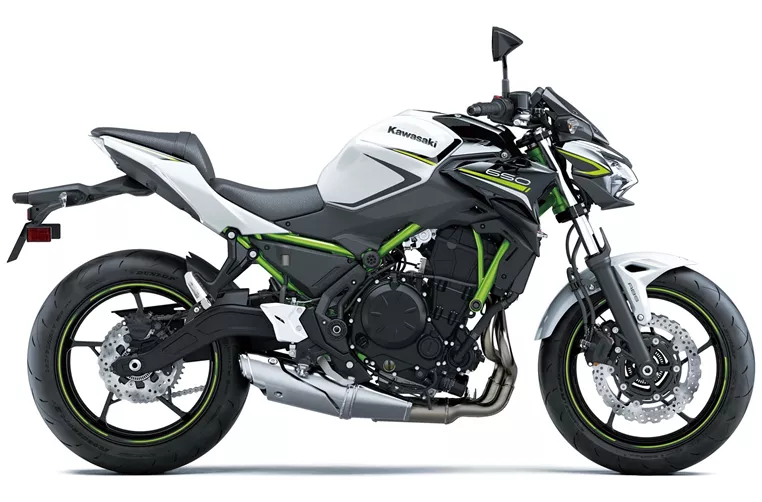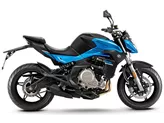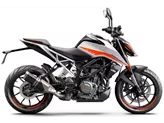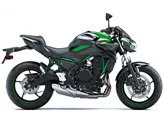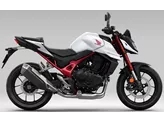Honda CB650F 2017 vs. Kawasaki Z650 2020

Honda CB650F 2017
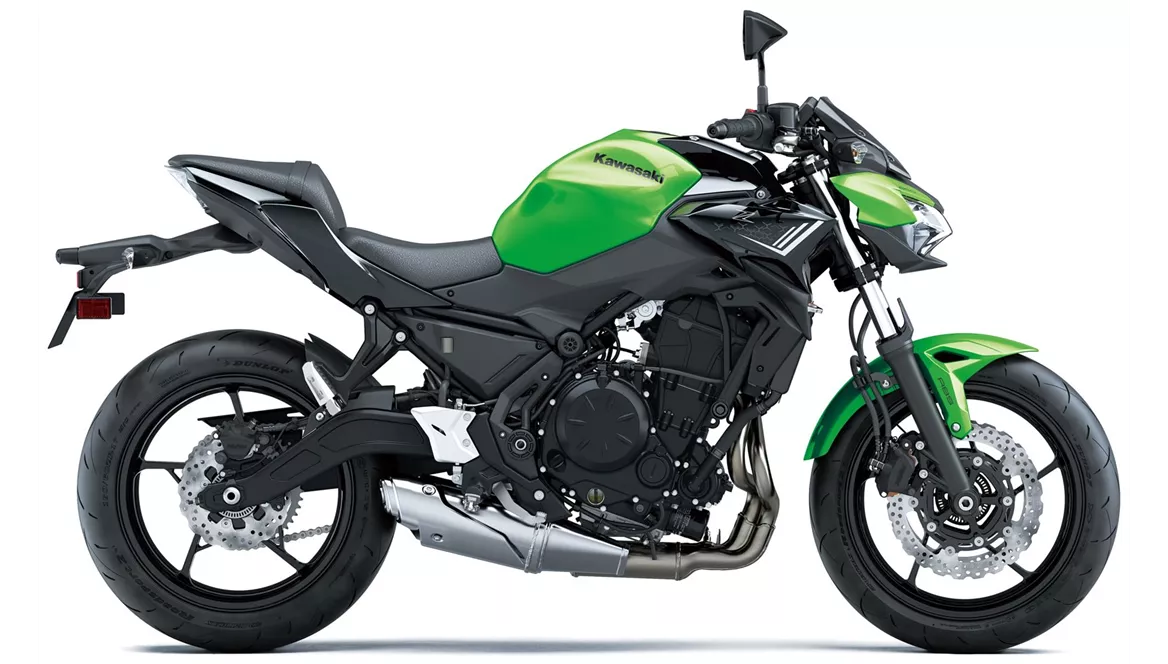
Kawasaki Z650 2020
Vue d’ensemble - Honda CB650F 2017 vs Kawasaki Z650 2020
The Honda CB650F 2017 and the Kawasaki Z650 2020 are both naked bikes with similar engine types, displacements, and fuel systems. However, there are several notable differences between the two models.
In terms of engine power, the Honda CB650F 2017 has a higher output with 91 HP compared to the Kawasaki Z650 2020's 68.2 HP. However, the Kawasaki Z650 2020 has a slightly higher torque of 65.7 Nm compared to the Honda CB650F 2017's 63 Nm. This means that the Honda CB650F 2017 may have better acceleration and top speed capabilities, while the Kawasaki Z650 2020 may offer better low-end torque for easier city riding.
Both bikes feature a telescopic fork front suspension and a swing arm rear suspension with a monoshock and preload adjustment. The chassis of both bikes is made of steel, providing stability and durability. However, the Honda CB650F 2017 has a slightly longer wheelbase of 1450 mm compared to the Kawasaki Z650 2020's 1410 mm. This may result in slightly different handling characteristics, with the Honda CB650F 2017 potentially offering more stability at higher speeds.

Honda CB650F 2017
In terms of braking, both bikes have double disk front brakes with double piston calipers. However, the Honda CB650F 2017 has larger diameter disks at 320 mm compared to the Kawasaki Z650 2020's 300 mm. Additionally, the Honda CB650F 2017 uses wave technology for its front brakes, which may provide better heat dissipation and improved braking performance.
Both bikes are equipped with ABS as an advanced rider assistance system, ensuring safer braking in various road conditions. The Honda CB650F 2017 features LED headlights, which offer better visibility and a modern look. On the other hand, the Kawasaki Z650 2020 has the added feature of LED daytime running lights, further enhancing visibility on the road.
In terms of dimensions and weights, the Honda CB650F 2017 has a slightly wider rear tire at 180 mm compared to the Kawasaki Z650 2020's 160 mm. The Honda CB650F 2017 also has a higher seat height at 810 mm compared to the Kawasaki Z650 2020's 790 mm. This may result in a more upright riding position on the Honda CB650F 2017 and potentially make it more comfortable for taller riders.
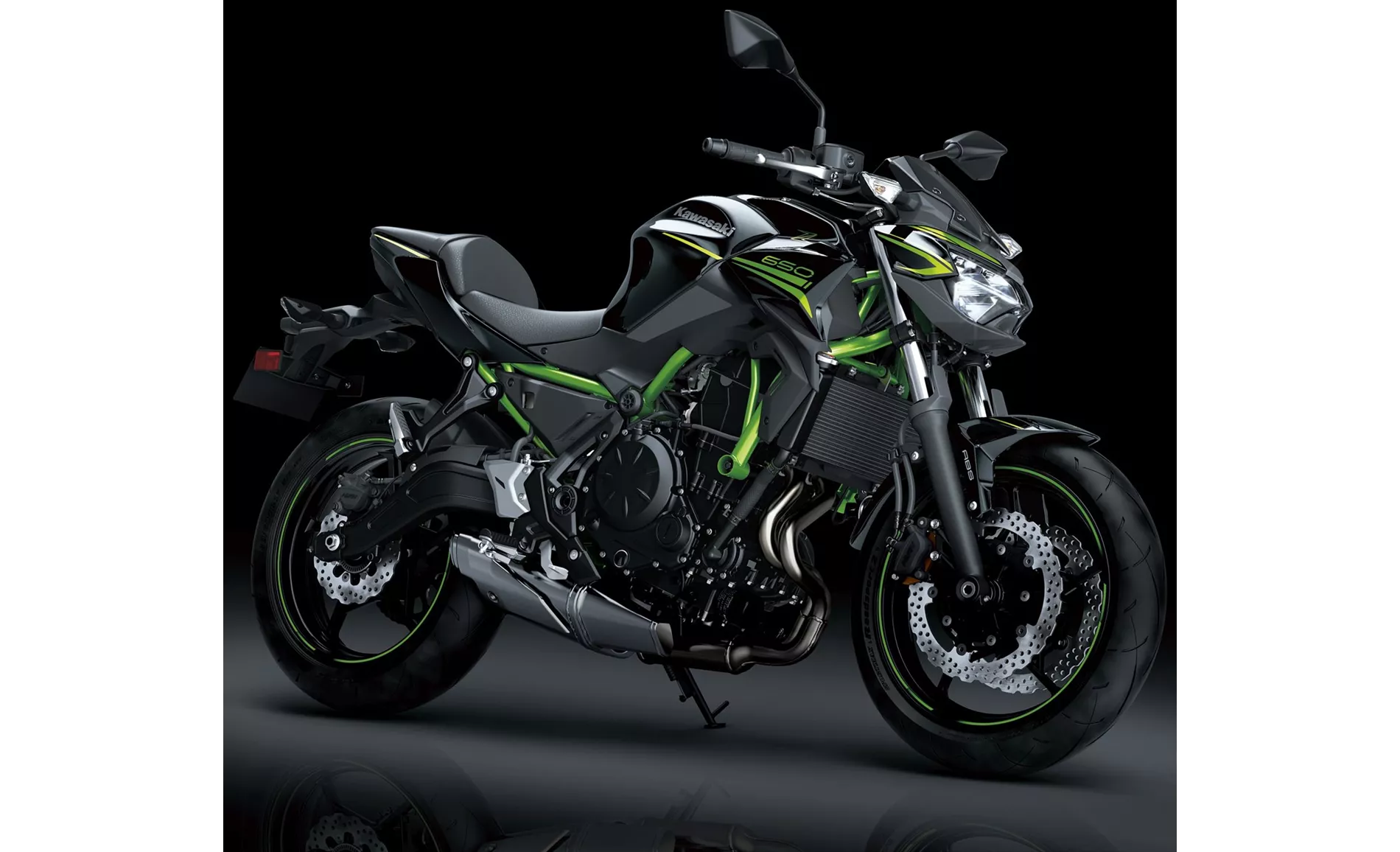
Kawasaki Z650 2020
The Honda CB650F 2017 has a kerb weight of 200 kg, while the Kawasaki Z650 2020 is slightly lighter at 185 kg. Both bikes have ABS, but the Honda CB650F 2017 weighs slightly more at 208 kg with ABS compared to the Kawasaki Z650 2020's 187.1 kg with ABS. The fuel tank capacity of the Honda CB650F 2017 is also larger at 17.3 liters compared to the Kawasaki Z650 2020's 15 liters, potentially offering a longer range between refueling.
In terms of equipment, both bikes feature LED headlights, but the Kawasaki Z650 2020 also has LED daytime running lights, providing added visibility during the day. The Kawasaki Z650 2020 also features a TFT display, which offers a more modern and customizable interface compared to the Honda CB650F 2017's display. The Kawasaki Z650 2020 also has connectivity options through the Rideology App, allowing riders to access additional features and information.
In summary, the Honda CB650F 2017 and the Kawasaki Z650 2020 are both capable naked bikes with similar engine types and displacements. However, the Honda CB650F 2017 offers more power and potentially better acceleration, while the Kawasaki Z650 2020 has a slightly higher torque and a more compact design. The Honda CB650F 2017 also has a longer wheelbase and larger front brakes, potentially providing more stability and improved braking performance. Both bikes have their strengths and weaknesses, and the choice between them will ultimately depend on the rider's preferences and priorities.
Caractéristiques techniques Honda CB650F 2017 par rapport à Kawasaki Z650 2020
Avantages et inconvénients en comparaison
Avantages et inconvénients en comparaison
Honda CB650F 2017

Dans sa dernière version, la Honda CB 650 F 2017 est exactement la moto naked à quatre cylindres que nous voulions chez Honda. Le réglage du moteur et le rapport de transmission plus court garantissent un sprint rapide à 100 km/h, avec un son de quatre cylindres criant. Le réglage du châssis est également très sportif, ce qui permet de se sentir immédiatement à l'aise sur la Honda. Avec la technologie d'éclairage LED, Honda prouve que la CB 650 F est en phase avec son temps, seul l'écran mérite d'être revu.
Kawasaki Z650 2020

La nouvelle Z650 de Kawasaki est tout simplement un paquet complet. Les composants techniques ne sont peut-être pas à la hauteur, mais combinés entre eux, ils donnent une moto agréablement neutre, avec laquelle tout le monde aura beaucoup de plaisir. Pas de bizarreries - simplement une moto naked qui fonctionne vraiment bien sur les routes de campagne sinueuses. L'écran TFT, que nous ne trouvons pas encore chez la concurrence, ainsi que l'aspect adulte, qui s'inspire fortement des modèles Z plus grands, sont bien sûr des atouts supplémentaires. Seul le point de pression du frein avant aurait pu être plus clairement défini - mais dans cette catégorie de prix, on ne peut pas tout avoir.
Comparaison des prix Prix moyen du marché Honda CB650F vs Kawasaki Z650
There are a few key differences between a Honda CB650F 2017 and a Kawasaki Z650 2020. It takes less time to sell a Honda CB650F with 72 days compared to 80 days for a Kawasaki Z650. Since model year 2014 1000PS.de editors have written 14 reviews for the Honda CB650F and 31 reviews for the Kawasaki Z650 since model year 2017. The first review for the Honda CB650F was published on 11/4/2013 and now has more than 14,100 views. This compares to more than 25,000 views for the first review on Kawasaki Z650 published on 11/8/2016.

